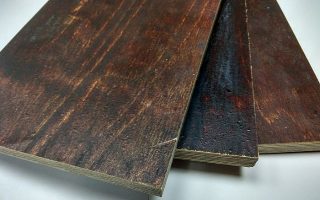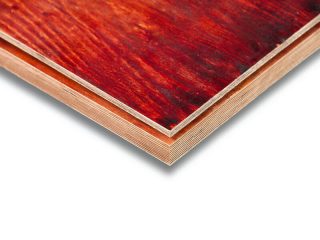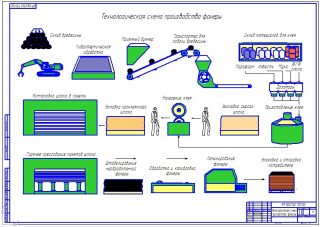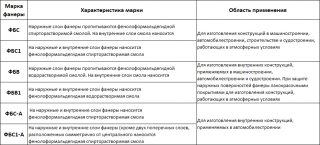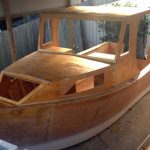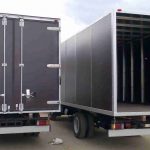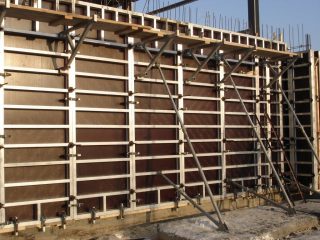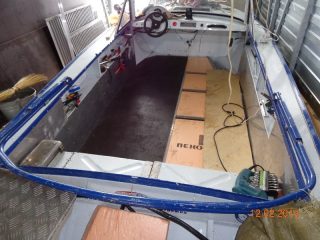Bakelized plywood boards are multi-layer building materials made from thin pine or birch veneer. Additionally, the inner and outer layers are impregnated with bakelite varnish. For bonding under pressure and high temperature, formaldehyde resins are used. Bakelite plywood has high performance characteristics.
Material description
Standard material dimensions:
- 5.77 x 1.25 m;
- 3.0 x 1.5 m;
- 2.85 x 1.25 m;
- 2.5 x 1.25 m;
- 2.44 x 1.22 m.
Film faced bakelite plywood is very durable, its performance is comparable to the strength of alloyed metals. Stably resists friction, shock, pressure, shock.
- up to 15 mm are referred to as sheet varieties;
- over 15 mm - called slab.
Plates and sheets assembled from continuous veneer elements (0.1 - 1.0 mm thick) are classified as whole, and glued from several parts along the length - to composite... The second material has a slightly reduced strength.
The material is cut, milled, sharpened, polished, drilled and ground. According to the method of processing, the boards are more suitable for metals than for wood.
Manufacture and brands
Further stages of production:
- The veneer is processed on a panel saw, where the material gets the required dimensions.
- They are dried in closed chambers in rolls, which are suspended for uniform action of hot air, the raw material is moved by a roller conveyor.
- Dry raw materials are additionally rejected and sent to the production workshop.
- The veneer is spread on tables, cleaned, grouped into piles by size.
- First, the inner frame is made of coniferous veneer, all sheets are coated with bakelite varnish and resins.
- Then do the same with veneer for the outer surface.
- The fibers of the subsequent formation are placed perpendicular to the previous one.
- The resulting "cake" is dried, then pressed down with a heat press.
Under pressure, the necessary components are melted, the material gains strength. The resulting plywood is additionally laminated, sanded, cut to the required dimensions. There is an option when the layers are not coated with resin, but the entire stack is dipped into the solution.
- FBS. The outer coating is impregnated with phenol-formaldehyde mastic, soluble in alcohol. The inner layers are not processed, but only pressed.
- FBS - 1... Outer and inner layers are impregnated with phenol-formaldehyde alcohol-soluble mastic.
- FBV. Outside, water-soluble formaldehyde mastics are used, but they are not applied inside.
- FBV - 1. Water-soluble formaldehydes are used on the inner frame and outer layers.
- FBS1 - A... All layers are impregnated with an alcohol-containing resin solution, except for the transverse ones, located symmetrically from the middle layer.
The USSR State Committee adopted and published standards for the manufacture and production of bakelized plywood by decree No. 4828 dated 10.10.1983.
Characteristics of Bakelite Plywood
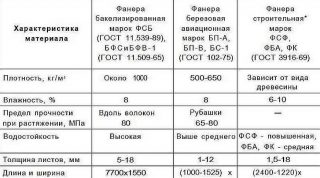
The material shows good quality, which determines its applications.
Bakelite plywood was repeatedly tested in laboratory conditions, and empirically determined parameters:
- tensile strength to stretch along the fibers of the outer layer is for a thickness of 5, 7 mm - 59 - 89 MPa, a thickness of 10, 12 mm - 72.5 MPa, 14, 16, 18 mm - 68.5 MPa;
- bending strength across the outer fibers has a value for a thickness of 7 mm - 63.5 MPa, 10, 14 mm - 68.5 - 80 MPa, 16, 18 mm - 79.5 - 90 MPa;
- bending strength along the fibers of the outer layer is for a thickness of 8, 12 mm - 88 - 117.4 MPa, 14 - 18 mm - 78.5 - 108 MPa;
- shear stability limit has indicators for any thickness 1.47 - 1.76 MPa;
- humidity sheets are allowed for a thickness of 5 - 7 mm - 6 + 2%, for a thickness of 10 - 18 mm - 8 + 2%;
- density for panels of different thickness is 1200 - 1470 kg / m³.
Resistant plywood is distinguished by the method of processing, unpolished, sanded and laminated boards are distinguished. The first type is used for rough work, the second is intended for subsequent varnishing, the third type does not require additional finishing after installation.
Application area
Wear-resistant and reliable material is used in various fields. Application is limited only by the fact that sheets are expensive, therefore, in ordinary places, they use more budget options that are suitable in quality.
Areas of use:
- building;
- mechanical engineering;
- shipbuilding;
- instrumentation.
For each specific case, sheets with the required properties are selected. For temporary work, they choose inexpensive unpolished types, and for those in charge - laminated or polished.
During the war
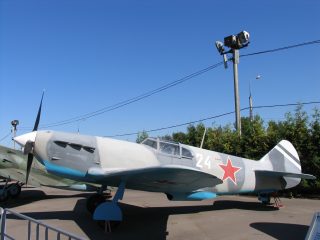
In the pre-war years, there was an urgent need for structural materials for aircraft, so it was decided to use wood-laminated plastics, including bakelite plywood. The material showed better qualities than wood.
Manufacturing process developed L. I. Ryzhkov - Soviet aviator engineer yet in 1935, and in 1940 it was thoroughly studied by the All-Union Institute of Aviation Materials. The technology was later improved plant "Karbolit".
The material was successfully used in construction high-speed fighters LaGG - 3 and LaGG - 1, from it were made parts of wings, fuselage for aircraft Yak and Il... Later, the initiative was taken up by the Japanese for the production of kamikaze aircraft for attacks on the naval fort of Pearl Harbor.
Currently
After the end of the war, plywood became popular in other industries as well. Its other name is marine, ship, ship... The hulls of boats, boats, yachts are sheathed with moisture resistant material.
Others application options:
- In construction work for the device of locks, floating docks, hydraulic locks. Sheets are allowed to manufacture strong reusable formwork. They are used to build supporting and supporting structures.
- Do car vans and flooring in transport: buses, metro, trams. In mechanical engineering plywood is used for the manufacture of parts of mechanisms, structural spare parts, gears, friction units, bearing shells and others.
The material is used in the sphere space and cryogenic technology. In electrical engineering make insulators, parts of transformers, rectifiers, used along with textolite and fiberglass. Bakelite panels use in the metallurgical and mining industry.

